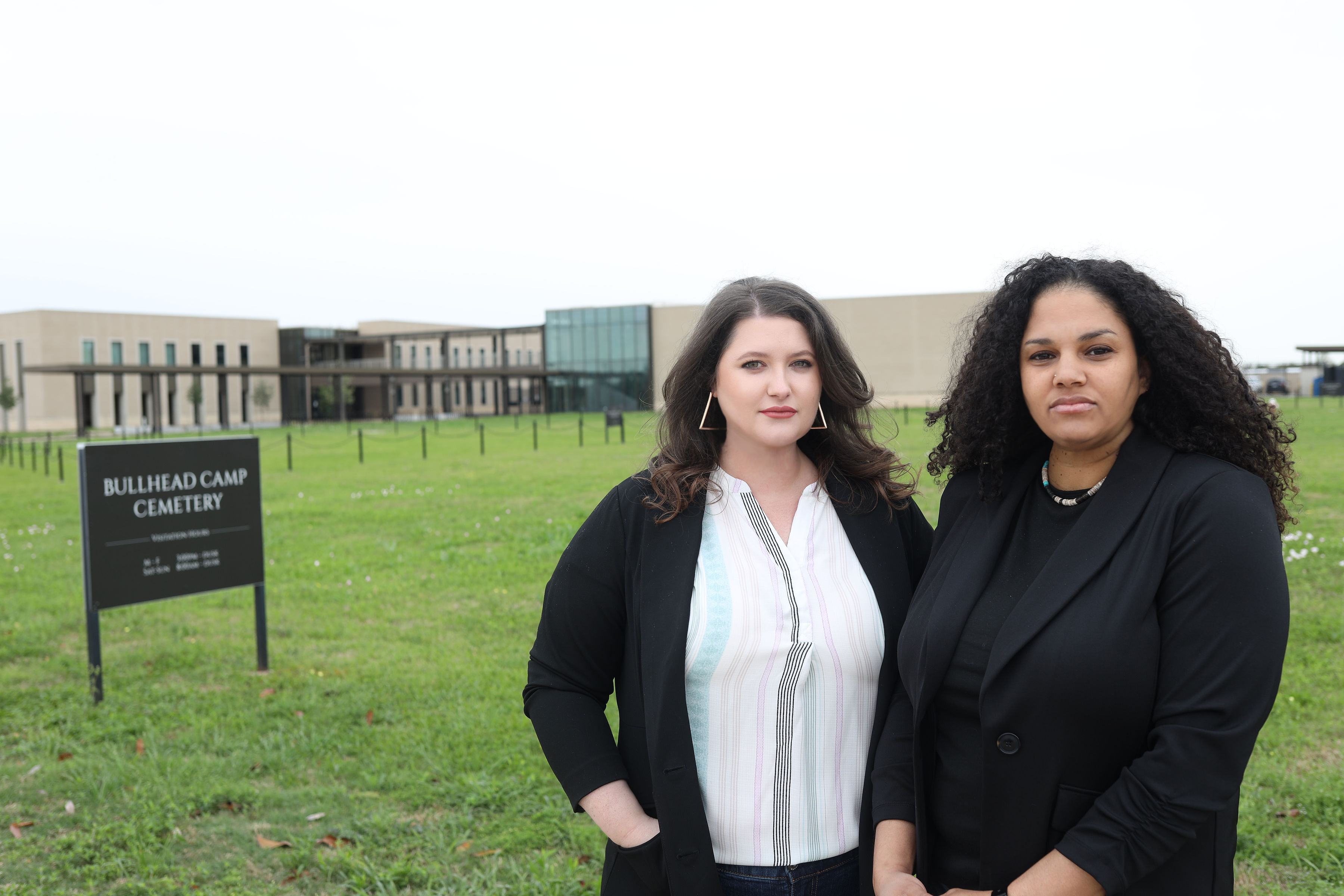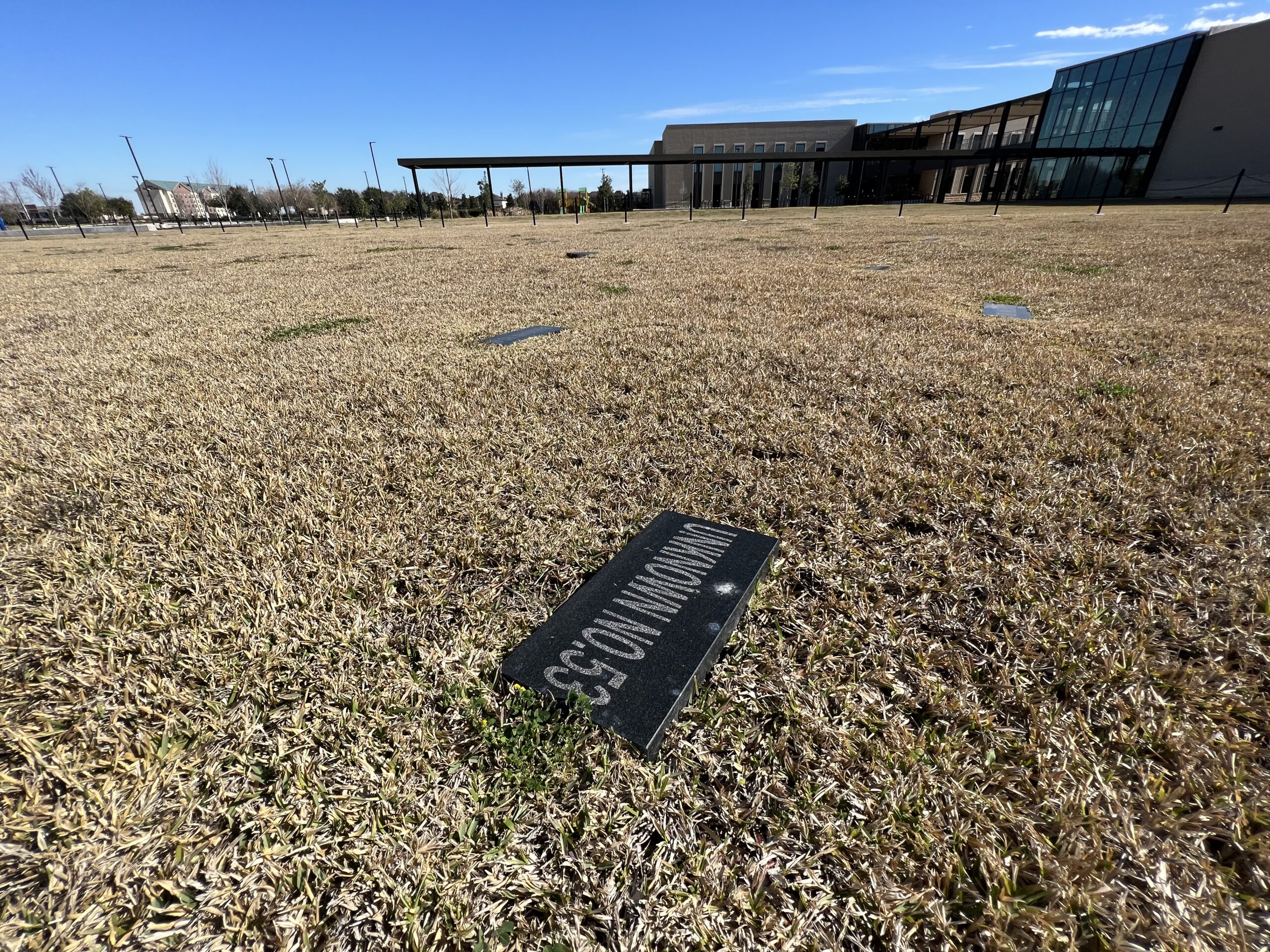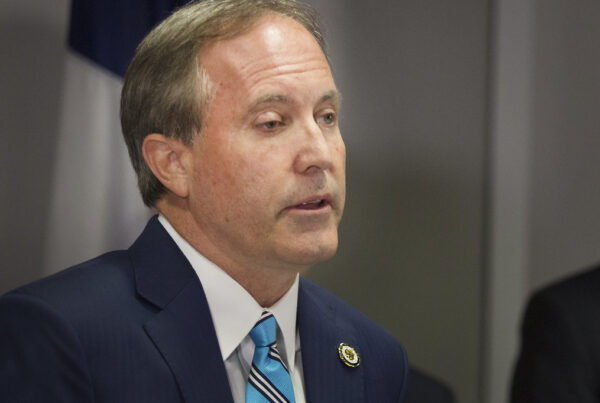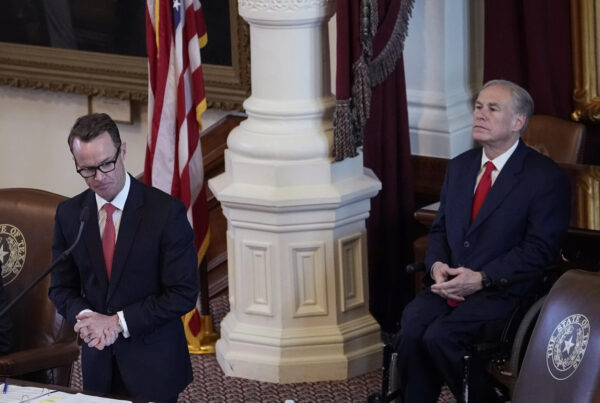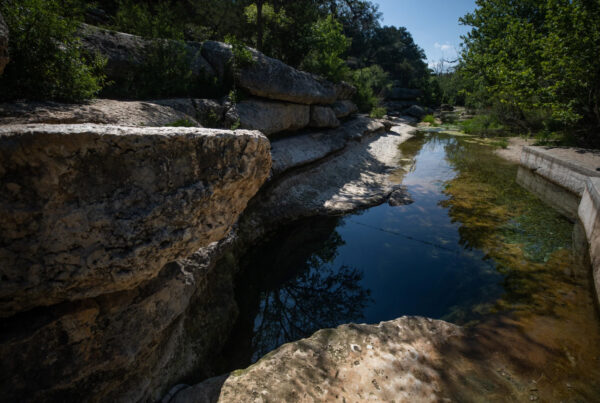In 2018, construction crews working on a new campus for the Fort Bend Independent School District in the city of Sugar Land made a gruesome discovery: 95 unmarked graves that officials quickly determined made up a historic cemetery.
It was the type of discovery that activists had been warning would turn up – Sugar Land was, after all, once home to one of the largest convict labor camps in the state, and hundreds of the Black men who worked in such camps ended up unceremoniously buried throughout the county.
The story of the discovery touched off a yearslong fight between officials, activists, researchers and members of the community over what should be done with those buried, as well as the land itself. It’s a story that is detailed in the new podcast “Sugar Land,” produced by the Texas Newsroom and premiering June 16 across podcast platforms.
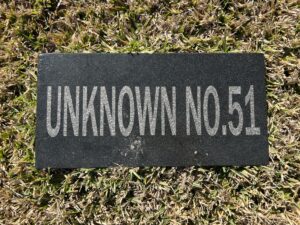
Simple tiles reading “Unknown #1,” “Unknown #2” and so on mark each of the graves in the Sugar Land 95 cemetery located between a new school and parking lot. The Texas Newsroom
Co-host Brittney Martin, an independent journalist based in Houston, knew the story was one that needed extra attention to tell.
“I thought that there was more to the story and that somebody really just needed to spend the time looking into it,” Martin said. “But I didn’t want to tell the story alone, especially not this story. So I was looking for somebody who could speak on the subject with more authority than I ever could.”
She found Naomi Reed, an anthropology professor at Southwestern University who had done her Ph.D. work in the same area the Sugar Land 95 were discovered and had written an article on it in Anthropology News. The two set out to begin uncovering the controversies surrounding the campus Fort Bend ISD had set out to build – much of it centering around the word of Reginal “Reggie” Moore, who had long warned that there were graves under the proposed land.
“So he is the main person in this story,” Reed said. “I would say even how I came to this story was a Texas Monthly article that was written about him in 2017 where he basically was finally getting attention for claiming that there were cemeteries on all this land that the school district owned.”
It was his work that forced the school to ask the Texas Historical Commission to hire archeologists to monitor the construction. And while the first few months of the construction went smoothly, the graves’ discovery in 2018 confirmed what Moore had long suspected, and which stood in opposition to Sugar Land’s “sweet” reputation.
“Sugar Land is such a sweet town – you know, it’s the home of Imperial Sugar – and they have so much built around this first colony legacy where it was like the first place settled in Texas,” Martin said.
Reed added that the story sent shockwaves across the Sugar Land and greater Houston/Missouri City community.
“I think a lot of people, Black people in Sugar Land and the surrounding area … were all shocked that there was any sort of Black history or Black presence in Sugar Land,” Reed said. “People who grew up in Sugar Land had not heard the story. I’d never heard the story. Brittney’s never heard the story. And so Sugar Land quite generally is seen as kind of a, I would say, upper-class, predominantly white community. And so to learn that much of its foundation and success was Black labor, I think upset a lot of people.”


